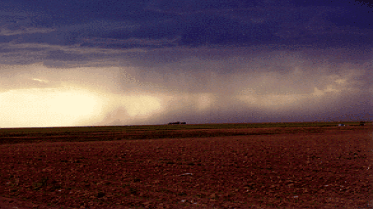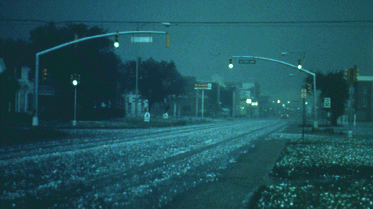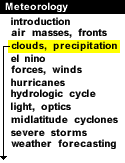
|
Rain develops when growing cloud droplets become too heavy to remain in the cloud and as a result, fall toward the surface as rain. Rain can also begin as ice crystals that collect each other to form large snowflakes. As the falling snow passes through the freezing level into warmer air, the flakes melt and collapse into rain drops. The picture below shows heavy rain falling from a Texas thunderstorm.

Photo by: Olthoff
Hail is a large frozen raindrop produced by intense thunderstorms, where snow and rain can coexist in the central updraft. As the snowflakes fall, liquid water freezes onto them forming ice pellets that will continue to grow as more and more droplets are accumulated. Upon reaching the bottom of the cloud, some of the ice pellets are carried by the updraft back up to the top of the storm.

Photo by: NSSL
As the ice pellets once again fall through the cloud, another layer of ice is added and the hail stone grows even larger. Typically the stronger the updraft, the more times a hail stone repeats this cycle and consequently, the larger it grows. Once the hail stone becomes too heavy to be supported by the updraft, it falls out of the cloud toward the surface. The hail stone reaches the ground as ice since it is not in the warm air below the thunderstorm long enough to melt before reaching the ground.

introduction |
|

Freezing Rain |




